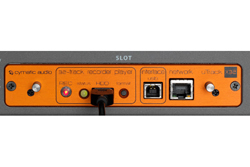

It will only play back linear WAV files, either directly from the root directory, or stored in folders, with options to play continuously through all files in a folder, or a single file at a time. Amusingly, the USB control window graphic mimics an old-fashioned cassette player, and the spools even rotate when playing! However, the USB replay facility doesn't recognise connected iPods or iPhones, or MP3 files at all.

However, unbalanced analogue inputs are provided on auxes 5/6, and a USB memory stick port appears on aux inputs 7/8. The AES50 ports can also be used to share buses between X32 consoles.Īn obvious omission is any form of conventional digital input, such as S/PDIF, which would enable direct connection of a CD player, for example. With up to three units per AES50 interface, a total of 96 sources and 48 returns is accessible from the console.


These use the AES50 'SuperMAC' standard - an ultra-low latency (typically 0.25ms) audio network hooked up with standard Cat 5 cabling - and are primarily intended for connecting Behringer's new S16 digital stage boxes. Thirty-two channels of audio can be input from a computer via the XUF USB/Firewire interface card slot, and there are also two sets of 48 digital inputs on the desk itself.
#BEHRINGER X32 USB PLAYER FORMAT PRO#
The preamp circuitry is similar to that employed in the Midas Pro 2, and significantly better than any previous Behringer offering.
#BEHRINGER X32 USB PLAYER FORMAT PLUS#
The analogue inputs comprise 32 preamps (with individually switched phantom power) that present a relatively high 12kΩ input impedance and will happily accept line levels, plus six balanced auxiliary line inputs, two of which have alternative unbalanced RCA/phono connections. The DSP offers a total of 40 input processing channels (32 mic channels plus six aux inputs and a stereo USB input), with 25 mix buses and output channels (including 16 internal buses, six matrix outputs and three main output buses). Behringer's design follows a similar paradigm to most digital consoles, where the physical inputs and outputs are connected, via a 168 x 168 digital routing matrix, to the internal digital signal processing core. The X32 features a wealth of analogue and digital I/O, including 32 mic inputs, 18 XLR line outs, two sets of 48-channel AES50 outputs, and six analogue auxiliary inputs and outputs.Īs with most digital desks, the X32's control surface belies its true power and potential. The X32 has obvious appeal to the budget and semi-pro live-sound market, as well as small-scale pro users, theatres and houses of worship. This dramatically undercuts the obvious competition, such as Yamaha's LS9 and Presonus's Studio Live, while competing on features with still more expensive desks such as the Soundcraft Vi series. Even more excitingly, it is set to sell at a street price of under £2000 in the UK. It is geared primarily towards live sound, but is sufficiently versatile to make studio applications perfectly viable too. For anyone who hasn't already been caught up in the marketing excitement, the X32 is a fully featured, 32-channel, 16-bus digital mixer with a generous supply of built-in effects and an impressively comprehensive feature set. The three companies' joint technical expertise has now produced its first fruit in the X32, a product that looks set to completely overturn the market for budget digital mixing consoles. Midas are very well known for class-leading live-sound mixing consoles, while Klark Teknik make ancillary equipment like graphic equalisers, system controllers, compressors and the classic DN780 reverb. Behringer are known for making cost-effective products, but their new X32 live mixer takes that to a whole new level.įormed in 1989, Behringer are one of the industry's best known 'pro audio' equipment manufacturers - almost everyone has used a Behringer product at some point! At the start of 2010, the Music Group, Behringer's parent company, acquired two closely linked British companies.


 0 kommentar(er)
0 kommentar(er)
